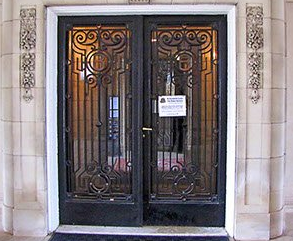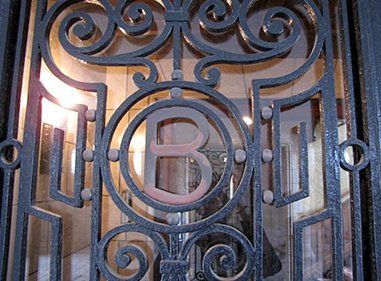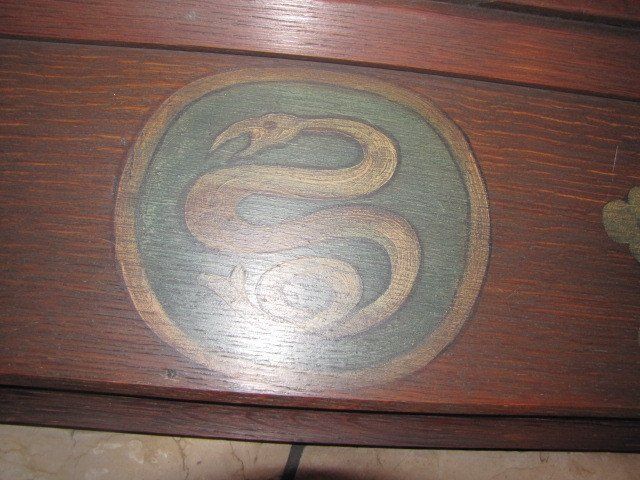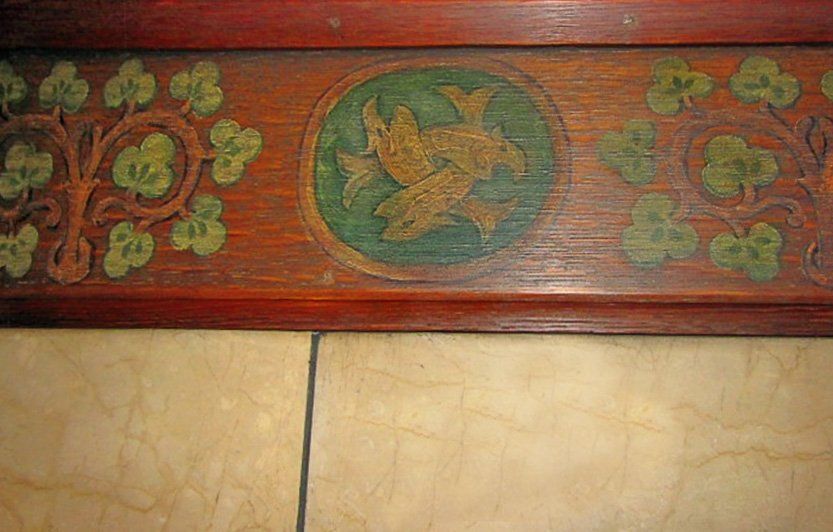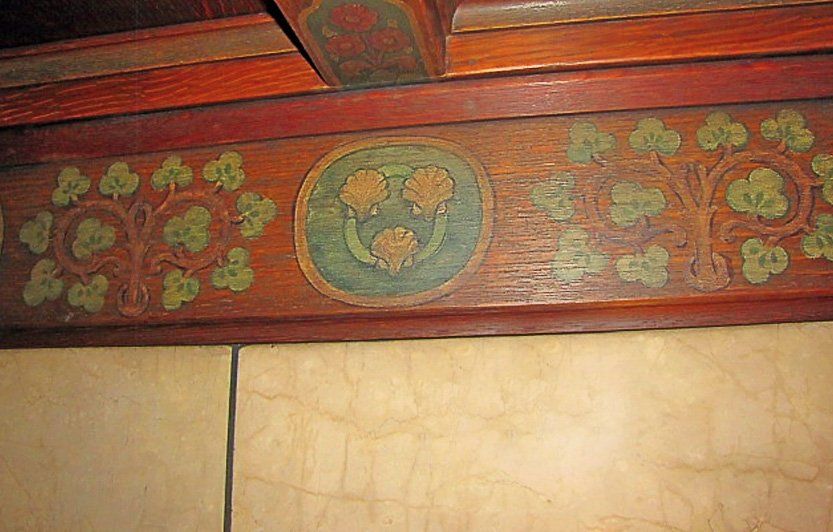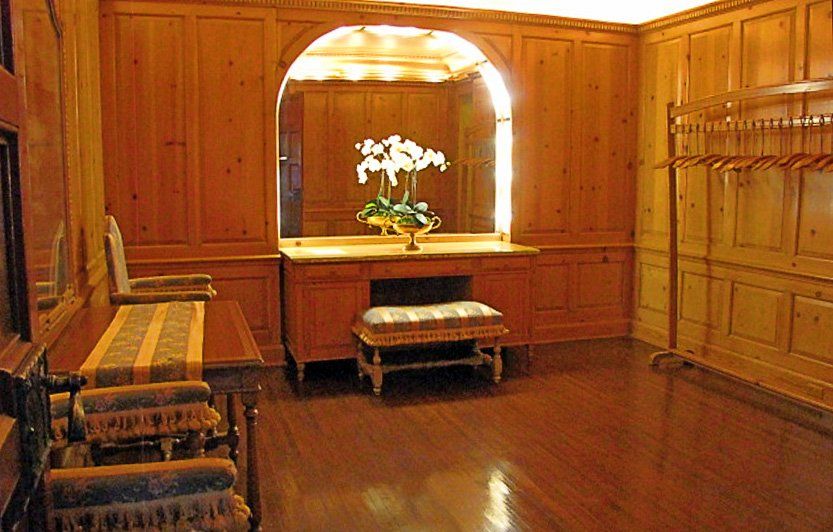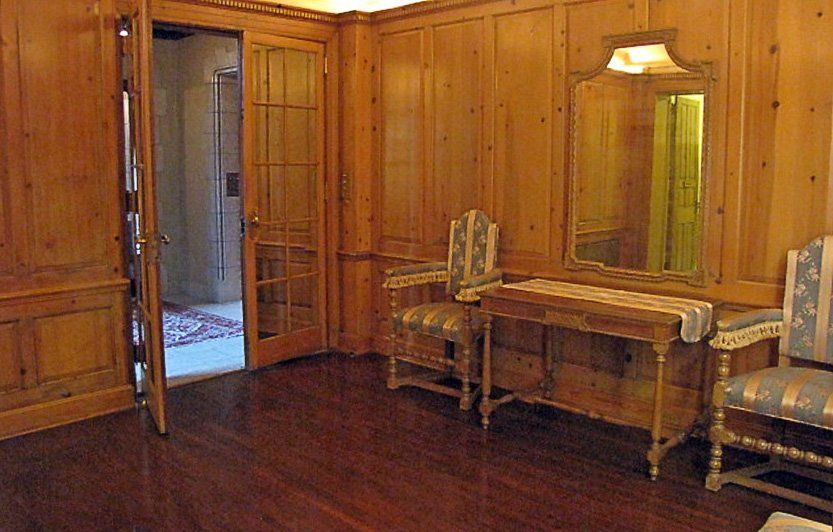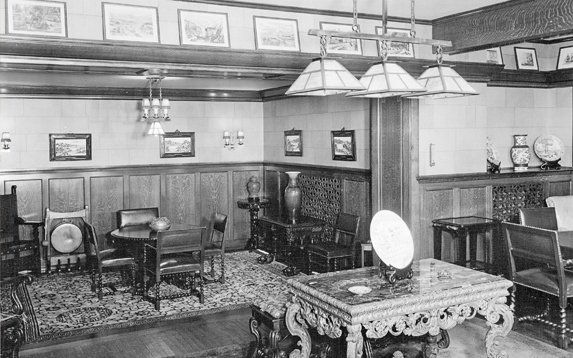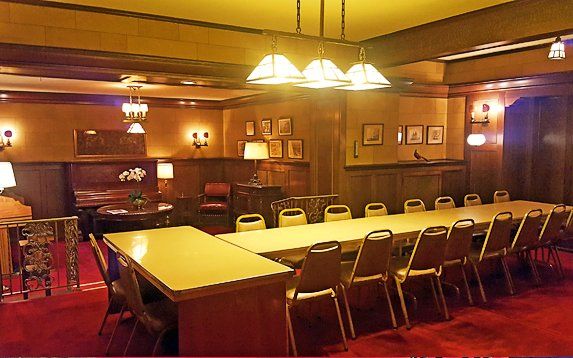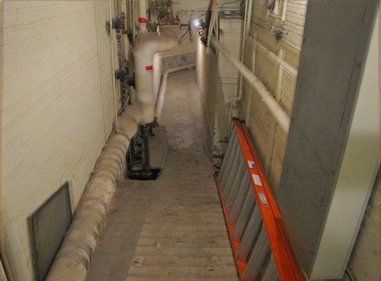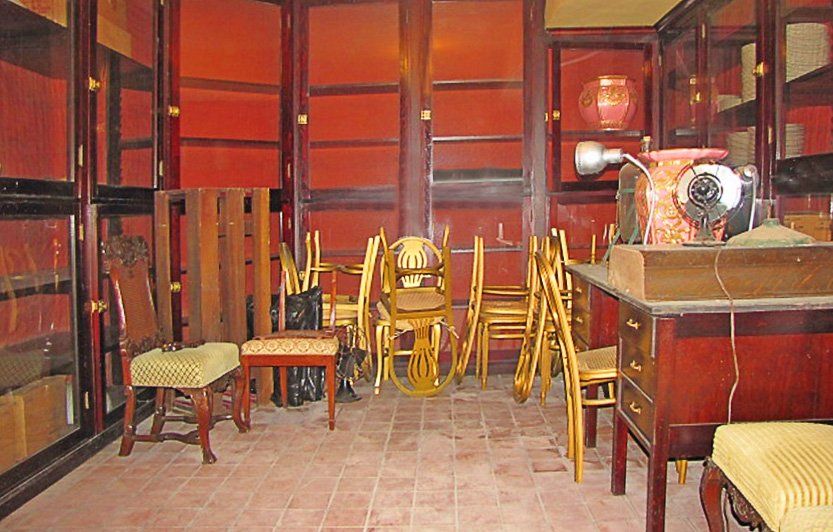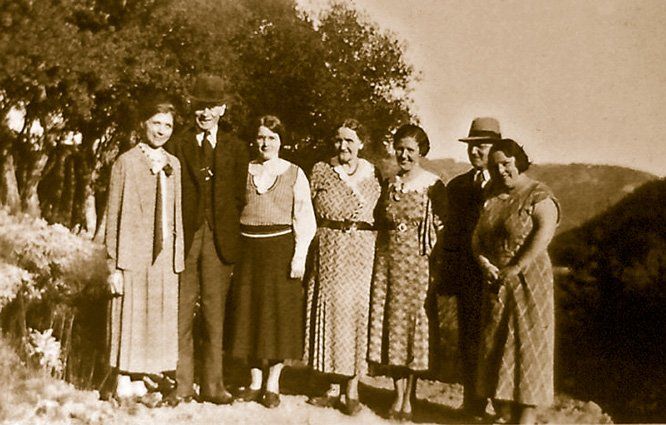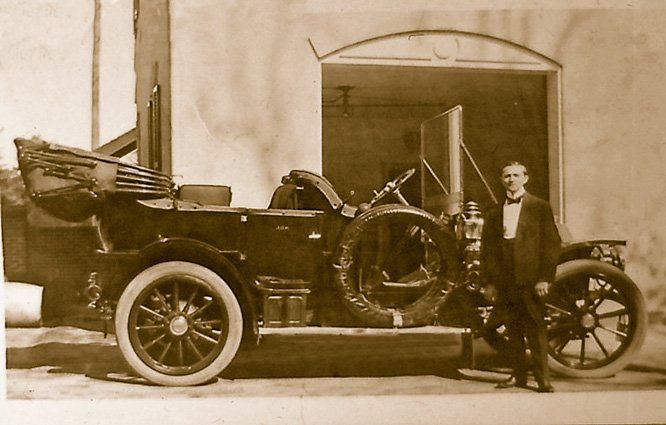the 1917 and 1925 changes to the home.
examples of this style come from renowned architect
Frank Lloyd Wright.
The Oak Room was redecorated in the 1920s in the newly popular Arts and Crafts style. This room was mainly used by gentlemen after dinner to enjoy a cigar or glass of brandy or, more popularly, as a card and game room. Most of the furniture and fixtures in this room are original to the home when the Butterworths lived here.
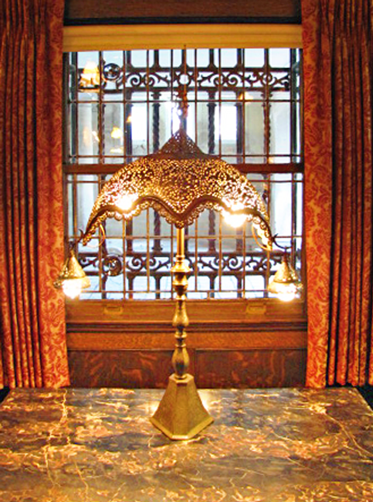
The beautiful Turkish lamp was purchased by the Butterworths and fits perfectly with the Arts and Crafts love of decorative motifs borrowed from Medieval Europe and Islamic designs.
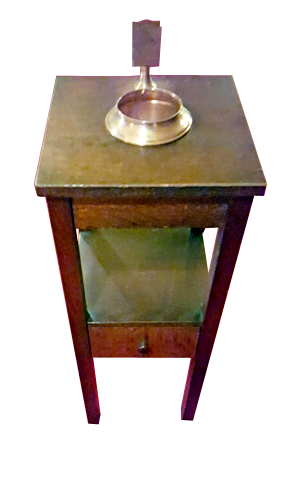
Cigars were a luxury and a hefty investment, even for the wealthy. Humidors are sealed boxes or drawers typically made of Spanish cedar wood or lined with metal, which maintain a constant humidity and does not allow cigars to dry out. It was customary after a dinner party for Mr. Butterworth to invite gentleman guests downstairs for a cigar. Scattered throughout the room are combination humidor-smoking stands which hold, disposed of, and stored his premium cigars.
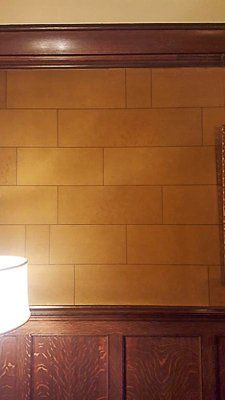
The general form of Arts and Crafts style was typically rectilinear and angular.
The painted wallpaper provides a unique element to the room.
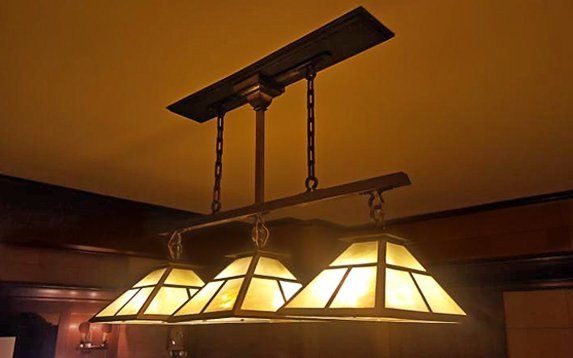
The Arts and Crafts style challenged the tastes of the Victorian era, choosing to create
environments that featured functionally beautiful objects. The Frank Lloyd Wright style
ceiling fixtures provide a functional and classic look to the room.
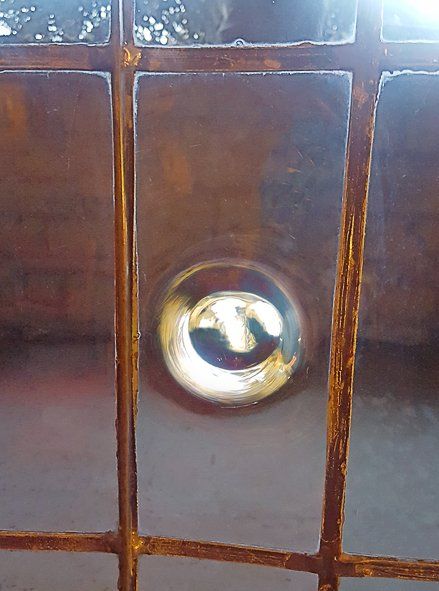
Before glass could be manufactured in sheets, window panes were made by spinning molten glass at the end of a tool to form a large round plate. Where the tool touched the glass, a large dome, or bullseye, was created. This lower quality glass was frequently used in barns and sheds. The bull’s eye glass in the Oak Room may have been chosen to fit the Arts and Crafts style to add visual interest to the windows, or to mark the less formal nature of the room.
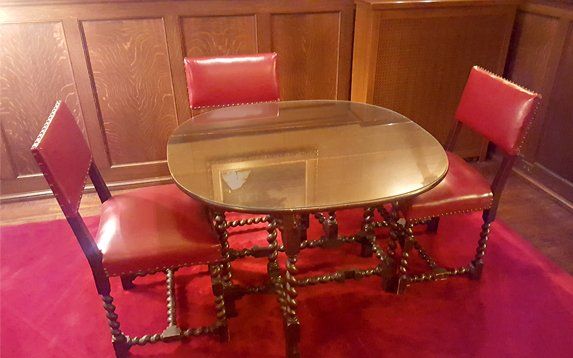
A favorite pastime of both William and Katherine Butterworth was bridge, a card game played with four people. On many occasions, both rooms were filled with tables of friends and business associates playing this challenging game.
All Rights Reserved | William Butterworth Foundation
